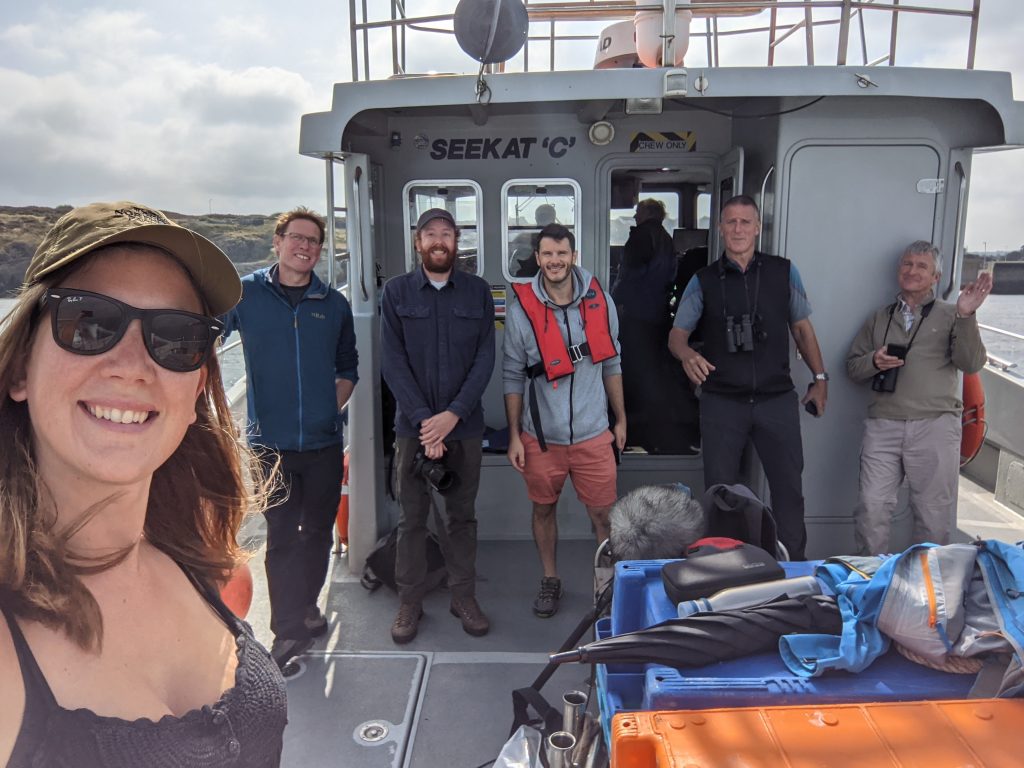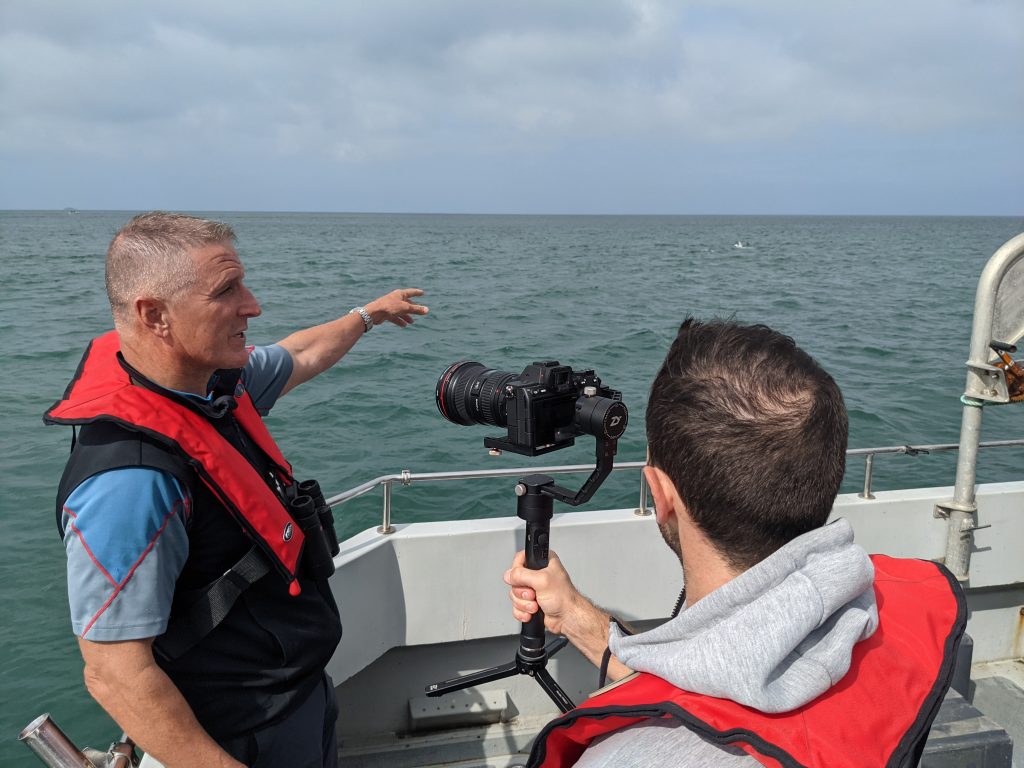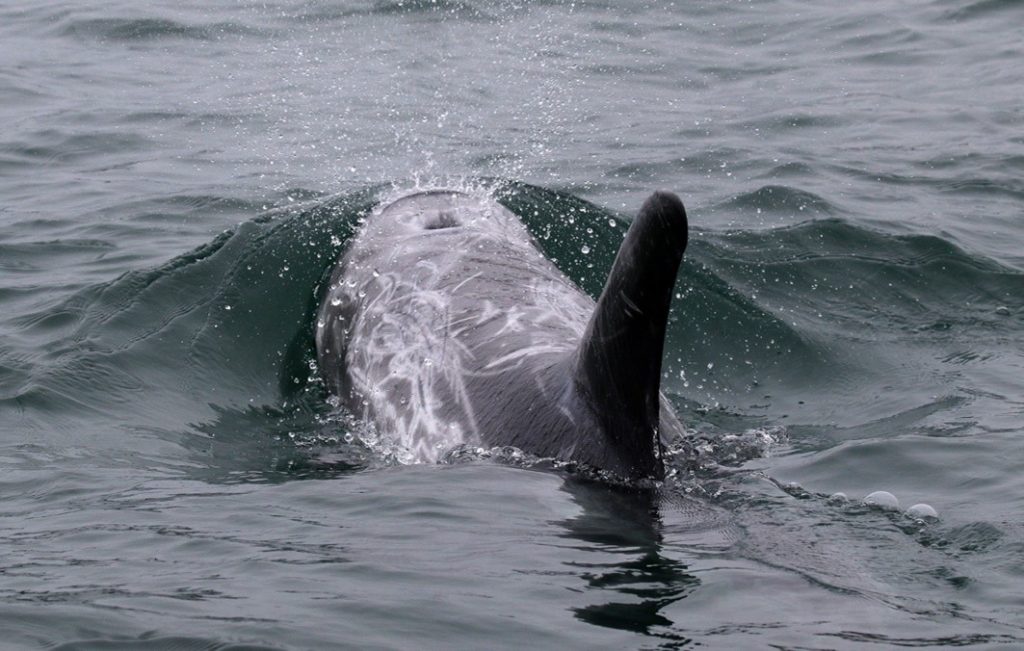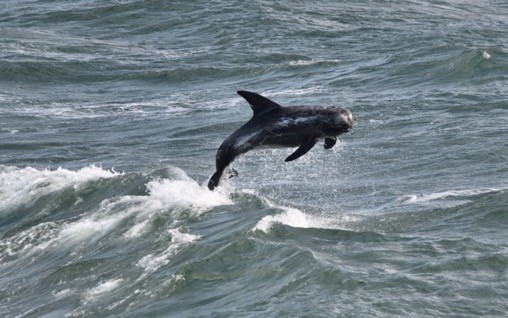Fancy a behind the scenes look at BBC’s fourth episode of Iolo’s Anglesey? Look no further!

Back in September 2021, our past Sightings Officer Kathy James, with the help of our Director, Professor Peter Evans, teamed up with those at BBC Wales and Iolo Williams to search for the mysterious Risso’s dolphins off the coast of Anglesey, North Wales. Kathy says, “As soon as I knew we were making a programme about Anglesey, I knew we had to include the Risso’s dolphins that are increasingly seen around the island’s waters and I knew that Professor Peter Evans would be just the person to help!”.
Risso’s dolphins are distinctive cetaceans with stocky features, blunt heads, and no discernible beak. They are born grey/olive-skinned but often lose this colouration as they get older due to scarring from other Risso’s dolphins and their favourite prey, squid. This species can be found in almost all temperate and tropical waters around the world, preferring deep water such as that on the edge of continental shelves. They often make an appearance off the north coast of Anglesey during the autumn.
Tracking Risso’s dolphins off North Wales can help us to better understand their movements and potential threats. Most groups number between 5 and 20 individuals although this is often hard to determine due to their tendency to spread out and take long dives. On the north Anglesey coast, the dolphins travel between Holyhead and Red Wharf Bay, with increased activity between a smaller section of Cemlyn to Point Lynas. Here, they appear to travel with the currents as they flow strongly during flood or ebb, which during spring tides can reach 20 knots or more. Iolo and the film crew came across a pod of around five Risso’s dolphins swimming around an old shipwreck of the coast of Anglesey. The shipwreck acts like a natural reef, attracting fish, squid, and octopus so it is likely they were looking for good feeding ground.
Peter took photos to be used for photo identification of these Risso’s dolphins alongside the filming expedition. Drone footage was also captured that will be soon handed over to Sea Watch Foundation for analysis. From this photo-identification, we are able to recognise many of the individuals although their markings, particularly rake marks, are subject to change over time. Nevertheless, our photo-ID studies have revealed how individuals return to the same areas, not only on a daily basis but also from year to year, in addition to making long distance movements around the Irish Sea and even to the Hebrides. One study from last year showed an animal that was first photographed off North Anglesey in 2015 to be observed off Falmouth in Cornwall in 2021.
Make sure to catch up on iPlayer with Iolo’s Anglesey to watch the amazing footage captured. The program aired on 10th June and is available to watch here.
Katie Baker Communication and Outreach Officer



























